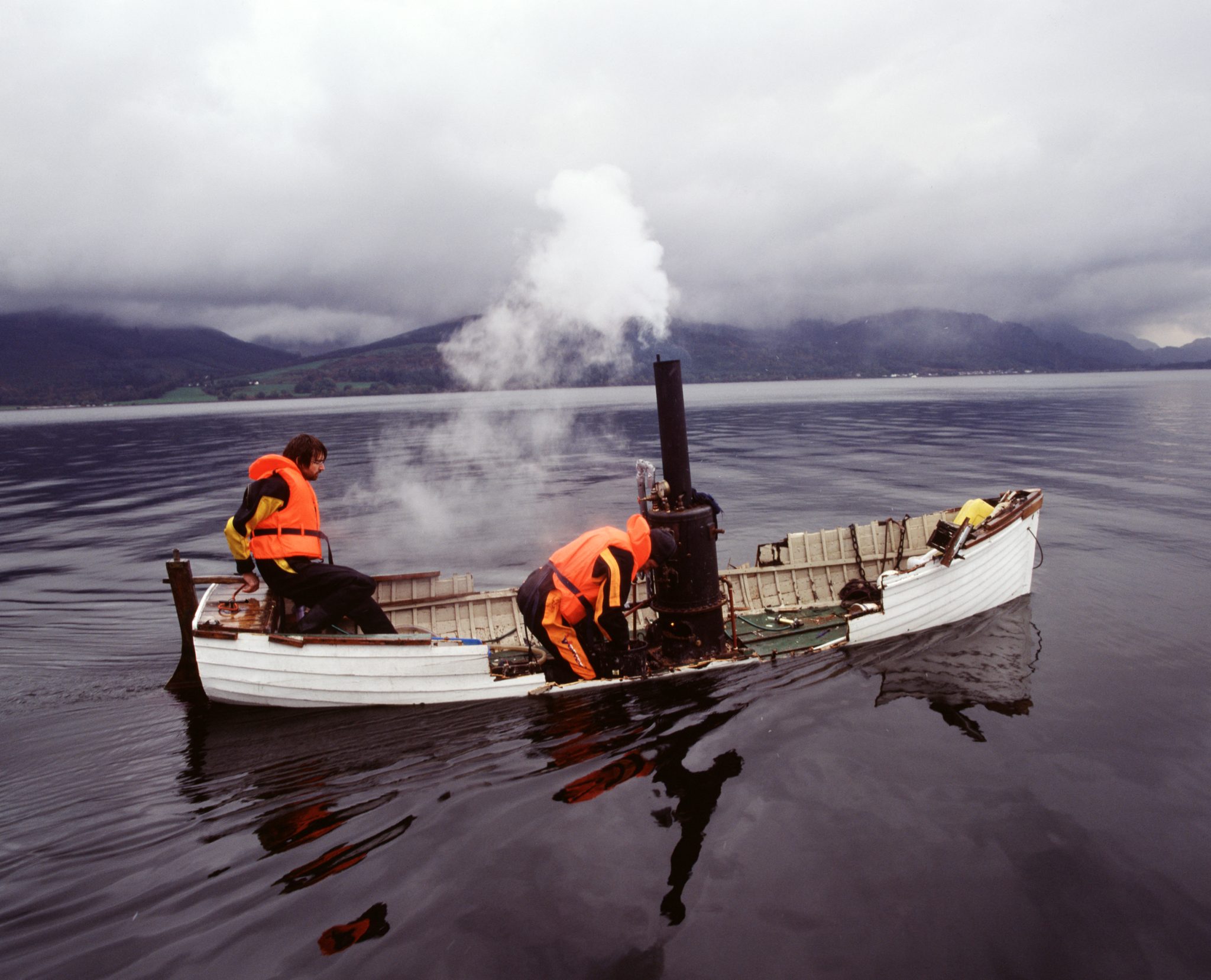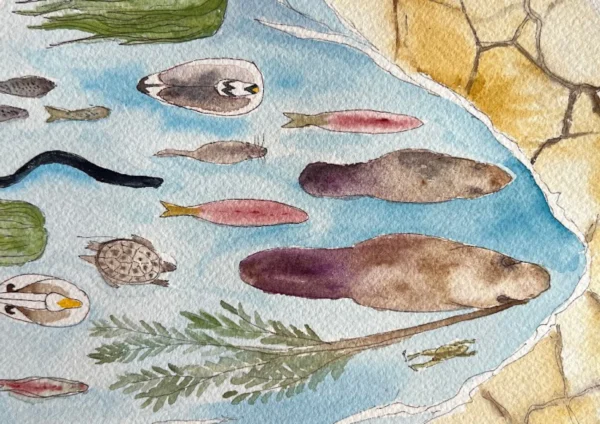
Exposition Météo des forêts
Entre constat des impacts de la crise climatique en cours et possibilité de résilience, l’exposition Météo des forêts propose des…

Crédit image : Simon Starling, Autoxylopyrocycloboros, vidéo, 2006.
Today in the West, the awareness of the existential necessity of sustainable action in the face of the many different environmental problems and the socio-economic crisis is tightly interwoven with the hedonistic longing for a « good life. » By means of « intelligent » consumption, our bodies and minds are to be kept energetic, and at the same time the environment is to be cared for—a claim in which ethics and consumption, aesthetics and sustainability do not exclude each other. Individual attempts at politicized everyday practices and a lifestyle geared to a complex concept of « sustainability » are oriented toward the most various medially disseminated offers, insights and convictions. A popular desire in this discourse aims at the return to « simplicity » and « closeness to nature » with which the denaturalization and over-complexity of the lifeworld is to be countered. This appetite is accompanied by ideas of using recycled products, of deceleration and a general reduction to what seems « essential, » sometimes joined by the longing for a re-enchantment of the world.
The exhibition The Simple Life presents works that from various perspectives address the yearning for modes of lifestyles considering sustainability and naturalness as well as their aporias, and in which the role of « art » itself is reflected.
With the new wall painting Let’s Go Paleo (2012) developed specifically for the exhibition venue, artist Angela Bulloch continues the work group « Rules Series », which she began with in 1992, consisting of a continuously growing collection of rules, regulations and norms rendered in language. This work addresses the gastronomic model of nourishment labelled as archaic—the palaeontological cuisine, praised as especially enjoyable and healthy, becomes an extreme example of a longing for naturalness. Centred on two bicycles with distinctive triangulated frames of fine steel tube originally developed in 1897 by the Danish designer Mikael Pedersen, Simon Starling’s installation “Carbon (Pedersen)” (2003) transforms this symbol of the a healthy-life into to a “survival kit”. Inspired by both a particularly resourceful piece of Cuban makeshift-technology, a chainsaw driven bicycle, and the design of the French VéloSoleX moped, the hybrid machines at the centre of the work will be used to log timber from the area surrounding the exhibition space and continue Starling’s investigation into the ongoing recycling of materials, forms and ideas across time and space.
In the video piece Whispering Pines 4, 2007, by Shana Moulton, the artist plays the character of Cynthia, who seeks happiness and healing. Addicted to contemporary forms of New Age practices and products, she searches for merging into nature. Diffuse religious references of the most various provenances intermingle with allusions to artistic modernism: attempts for redemption through becoming one with cosmic nature meet hypersensitive vanities.
In the work of Josephine Meckseper, such narcissisms find themselves entangled with the spheres of politics, consumerism, art, and utopia. Doubling them through its mirroring surface, Shelf No. 37 (2007), 2007, offers carefully arranged, glossy objects: cleaning instruments anticipate at the same time pollution and purification, a figure of a peacock spreading its tail refers to noble natural material as well as vanity, while nylon stockings, surrogating natural silk, turn luxury into mass commodity. A canvas structured with powdery colors inserts itself seamlessly into this display and provides a line of flight for projections, horror and utopia—which materialize in the print 2.99 (AOK), 1997–2007, as figures of beauty and fragments of dirt and healing.
Furthermore, we are delighted to present in the exhibition the realized drafts of the winners of Lüneburg’s Daniel Frese Prize 2012, which this year was dedicated to the theme of « Art and Sustainability/Non-Sustainability »: Niko Wolf, winner in the category of « Young Emerging Art, » deals with molehills on the property of the total work of art « Kunststätte Bossard » in his installation Museum of Mounds or: The Economy of Oblivion, 2012. Over several months, the artist documented all molehills and, for the exhibition, translated the collected materials into a system of archiving, selecting and presenting developed according to the logics of the museum. In the maze of abundant artistic possibilities, Wolf takes a step back with this « Earth Art » and uses the universal primeval matter as the starting point for considerations on sustainable art production.
Fabian Reimann presents the spatial essay The Memory of the Stars, 2012, which combines different real and fictive media events related to planetary and extraterrestrial conquests. The sustainability of the carriers of human knowledge, their durability and potential of mediation, are put up for debate. They simultaneously touch on the question of technological innovation—not least critically associated with anthropogenic changes of the earth’s atmosphere—and its political dimensions, irrespective of which it always also functions as a source of hope.
Curatorial collaboration: Cornelia Kastelan, Valérie Knoll, Bettina von Dziembowski.
The Simple Life
Angela Bulloch, Josephine Meckseper, Shana Moulton, Simon Starling
and winners of the Daniel Frese Prize 2012 Fabian Reimann and Niko Wolf
28 October–16 December, 2012
Opening: Saturday, 27 October, 5pm;
artist talk with Angela Bulloch 6pm
Kunstverein & Stiftung Springhornhof
Tiefe Straße 4, D-29643 Neuenkirchen
(near Soltau) – Germany
Entre constat des impacts de la crise climatique en cours et possibilité de résilience, l’exposition Météo des forêts propose des…
Une exposition qui explore les liens entre Deep Listening et écologie, dans le nouvel espace de la Fondation Pernod Ricard,…
Exposition sur le lien environnemental entre la rivière et le castor à l'Artothèque, Espaces d'art contemporain, Caen

